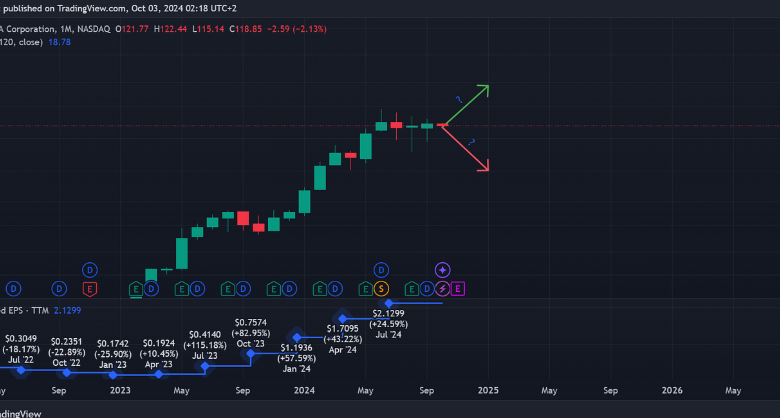Blum Price Prediction: Decoding Market Trends and Forecasting Techniques

Introduction to Blum Price Prediction
Blum price prediction is a critical tool in the financial markets, helping traders, investors, and analysts make informed decisions. When it comes to predicting the price of a cryptocurrency, commodity, or any other asset, it’s important to rely on accurate forecasting techniques that integrate market trends, statistical models, and expert insights. One such asset gaining attention is Blum. In this article, we’ll explore what Blum is, the factors that influence its price movements, and the techniques used to predict its future value.
Understanding Blum and Its Market
What is Blum?
Blum is a relatively new yet highly intriguing asset within the market. Its decentralized nature, built on a robust blockchain platform, allows it to be traded, invested in, and utilized for various purposes. As its ecosystem grows, Blum’s market presence continues to gain momentum, influencing its price trajectory. Understanding Blum’s core functions and characteristics is essential for grasping how its price moves.
See also: No More Guesswork! How to Use a Paint Calculator for Perfect Results
Historical Overview of Blum in the Market
Blum entered the market at a crucial time when decentralized assets were starting to gain more traction. Initially, its price was low, with early adopters seeing significant gains as the technology proved its worth. Over time, however, market volatility and external factors began to impact Blum’s value. A deep dive into its price history can provide insights into what to expect in the future.
Key Factors Affecting Blum’s Price Movement
There are several factors at play that can either drive the price of Blum up or cause it to fall. These include:
- Market Demand: Like any asset, the supply and demand for Blum heavily influence its price.
- Technological Advances: New developments within the Blum ecosystem, such as protocol upgrades or new use cases, can impact investor sentiment and, in turn, its price.
- External Economic Factors: Broader economic trends, such as inflation rates, government regulations, and technological disruptions, can significantly affect Blum’s price.
Analyzing Market Trends in the Blum Industry
Market Sentiment and Its Impact on Blum Prices
Market sentiment plays a crucial role in the price prediction of any asset, and Blum is no exception. Positive sentiment can lead to increased investments, driving the price higher, while negative sentiment can have the opposite effect. Understanding how sentiment works, from social media trends to investor confidence, is key to predicting Blum’s future price. For investors looking to make informed decisions, it’s essential to monitor Blum price and other major cryptos such as PEPE to USD price, as these tracking activities help identify market patterns and sentiment shifts that can influence trading strategies.
Major Drivers of Blum’s Market Trends
Some of the major trends affecting Blum’s market include:
- Adoption Rates: The more people use Blum’s technology and ecosystem, the greater the demand for its associated assets.
- Regulatory Environment: Government policies regarding blockchain and decentralized assets can create either opportunities or constraints for Blum.
The Role of External Factors in Blum Price Predictions
Global events, economic reports, and geopolitical developments can also influence the price of Blum. For example, if a country announces favorable legislation for cryptocurrencies, the price of Blum may rise.
Price Prediction Models for Blum
Introduction to Price Prediction Models
Price prediction models are essential for analyzing past data and forecasting future prices. These models utilize historical price data, market behavior, and other variables to create predictions. For Blum, there are several methods commonly used in forecasting its price.
Technical Analysis in Blum Price Forecasting
Technical analysis is the study of past price movements to forecast future trends. For Blum, this involves examining historical price data, chart patterns, and market indicators. Traders use technical analysis to predict potential support and resistance levels, helping them make decisions about entry and exit points.
Fundamental Analysis of Blum Price Trends
Fundamental analysis looks at factors such as Blum’s underlying technology, use cases, team, partnerships, and market demand to determine the intrinsic value of the asset. By understanding these fundamentals, investors can better predict Blum’s long-term potential.
Machine Learning and AI in Blum Price Prediction
Advances in artificial intelligence (AI) and machine learning (ML) have brought powerful tools for forecasting prices. Algorithms trained on large datasets can predict Blum’s price based on past market behavior, patterns, and external variables. AI models help traders and investors make more informed decisions by providing more accurate predictions.
How to Forecast Blum Price: Step-by-Step Guide
Data Collection and Preparation
Before making predictions, you must gather relevant data. This includes Blum’s historical price data, trading volumes, sentiment analysis, and external market indicators. Once collected, the data should be cleaned and processed for use in predictive models.
Selecting the Right Models for Blum Price Forecasting
There are many predictive models to choose from, such as moving averages, regression analysis, and machine learning algorithms. Choosing the right model depends on the data available and the time frame for the forecast.
Setting Up Predictive Algorithms for Blum
To create accurate price predictions, one needs to fine-tune machine learning algorithms based on the historical data. This involves adjusting parameters, training the algorithm, and testing its accuracy using real-world data.
Factors Influencing Blum Price Fluctuations
Market Sentiment and Consumer Confidence
Investor behavior, based on news, social media, and global trends, plays a critical role in Blum’s price fluctuations. The rise and fall of market sentiment are often reflected in Blum’s price.
Regulatory Changes and Blum’s Pricing Structure
As governments around the world start to regulate decentralized assets, these regulations will likely affect Blum’s value. For example, stricter regulations could reduce demand, while supportive regulations might lead to increased adoption.
Technological Advances and Their Role in Blum’s Price Development
Technological innovations within the Blum ecosystem, such as new upgrades or partnerships, can create optimism around the asset. These developments often lead to short-term price increases as investors react to potential future growth.
Predicting the Future: Short-Term vs Long-Term Trends
Short-Term Price Fluctuations and Their Predictability
Short-term price movements in Blum are highly volatile. Traders often rely on technical analysis and market sentiment to predict short-term price trends, but these predictions are less reliable over time due to the volatility of the market.
Long-Term Blum Price Growth Potential
While short-term fluctuations are difficult to predict, long-term trends may be more predictable based on Blum’s growth trajectory, technological advancements, and adoption rates. Investors with a long-term outlook may be more successful in forecasting Blum’s value over time.
Common Forecasting Mistakes to Avoid
Over-reliance on Historical Data
While historical data is important, relying solely on past trends can lead to inaccurate predictions, especially in fast-moving markets like Blum.
Failing to Account for External Shocks and Events
External events like regulatory changes or global economic shifts can disrupt price predictions. It’s important to remain adaptable and factor in potential unforeseen events.
Ignoring Volatility and Market Noise
Volatility is a core characteristic of assets like Blum. Forecasts should account for this unpredictability rather than assuming a straight line of growth or decline.
Real-World Examples of Blum Price Predictions
Case Study 1: Successful Blum Price Forecasting
Here, we will analyze an instance where Blum price predictions were accurate, examining the models and strategies used to make the forecast.
Case Study 2: Failed Predictions and What Went Wrong
We’ll also explore a failed prediction of Blum’s price, identifying the factors that led to the miscalculation and offering insights on how to avoid such mistakes.
Key Insights from Experts on Blum Price Trends
Expert Opinions and Insights on Blum Price Forecasting
Industry experts weigh in on the future of Blum and the techniques they use to predict its price. These insights offer invaluable guidance for investors looking to navigate Blum’s market.
Future Projections from Industry Leaders
Top Blum analysts provide their predictions for the future of the asset. Their insights can help guide investment strategies and long-term predictions.
Using Blum Price Forecasts for Investment Strategy
How to Integrate Price Predictions in Investment Decisions
Blum price forecasts can guide investors in making more informed decisions. By integrating these predictions with their investment strategies, traders can minimize risks and maximize potential returns.
Risk Management and Diversification Strategies
Relying on predictions alone can be risky. Effective risk management and diversification strategies are essential for managing potential losses and improving the chances of success.
Conclusion: Blum’s Market Outlook
Summary of Price Prediction Techniques and Trends
Blum’s price prediction involves a blend of technical analysis, fundamental evaluation, and machine learning tools. Understanding these methods is crucial for navigating Blum’s market.
Final Thoughts on Blum’s Price Trajectory and Investment Potential
While Blum’s future is uncertain, its underlying technology and market presence suggest it has strong long-term growth potential. Investors should remain informed and use diverse forecasting tools to guide their decisions.
FAQs:
Q1: What factors affect Blum’s price prediction?
- Blum’s price is influenced by market sentiment, demand, technological developments, and regulatory changes.
Q2: Can technical analysis predict Blum’s price movement?
- Yes, technical analysis can help predict short-term trends by analyzing historical price data and market indicators.
Q3: How reliable are machine learning predictions for Blum?
- Machine learning predictions are generally reliable, but they should be used in conjunction with other forecasting methods to account for market volatility.
Q4: What is the difference between short-term and long-term price predictions?
- Short-term predictions are more volatile and can be affected by daily market changes, while long-term predictions rely on broader trends and fundamental analysis.
Q5: What are the risks of relying too heavily on price predictions?
- Over-reliance on predictions without considering external factors can lead to unexpected losses, especially in volatile markets.
Q6: How can investors use Blum price forecasts to their advantage?
- Investors can use price forecasts to identify favorable entry and exit points, adjusting their strategies based on predicted market trends.




